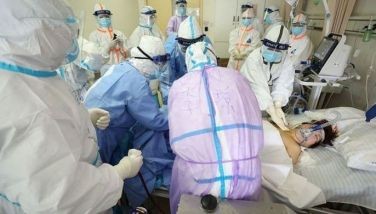Nobel Prize for work on brain's navigation system
STOCKHOLM — How do we remember where we parked the car? And how do we figure out a shortcut to work when there's a big traffic jam?
The brain, it turns out, has a GPS-like function that enables people to produce mental maps and navigate the world — a discovery for which three scientists won the Nobel Prize in medicine Monday.
Husband-and-wife scientists Edvard Moser and May-Britt Moser of Norway and New York-born researcher John O'Keefe were honored for breakthroughs in experiments on rats that could help pave the way for a better understanding of human diseases such as Alzheimer's.
"We can actually begin to investigate what goes wrong" in Alzheimer's, said O'Keefe, a dual British-American citizen. He said the findings might also help scientists design tests that can pick up the very earliest signs of the mind-robbing disease, whose victims lose their spatial memory and get easily lost.
It was in London in 1971 where O'Keefe discovered the first component of the brain's positioning system.
He found that a certain type of nerve cell was always activated when a rat was at a certain place in a room. Other nerve cells were activated when the rat moved to another place. He demonstrated that these "place cells" were building up a map, not just registering visual input.
Decades later, in 2005, the Mosers identified another type of nerve cell — the "grid cell" — that generates a coordinate system for precise "positioning and path-finding," the Nobel Assembly said.
"I made the initial discovery over 40 years ago. It was met then with a lot of skepticism," the 74-year-old O'Keefe said. "And then slowly over years, the evidence accumulated. And I think it's a sign of recognition not only for myself and the work I did, but for the way in which the field has bloomed."
John Kubie of the SUNY Downstate Medical Center in New York said this GPS system in the brain is used in such everyday tasks as remembering where a car is parked or taking a new shortcut on the way home. Kubie also said learning about it may teach scientists more about how the brain learns and remembers, even apart from navigating.
Born in Harlem and raised in the South Bronx, O'Keefe received his doctoral degree in physiological psychology at McGill University in Canada before moving to England for postdoctoral work at the University College London.
"If you can survive the South Bronx, you can survive anything," he said.
Monday's award was the fourth time that a married couple has shared a Nobel Prize and the second time in the medicine category.
"This is crazy," an excited May-Britt Moser, 51, said by telephone from the Norwegian University of Science and Technology in Trondheim, where she and her husband work.
"This is such a great honor for all of us and all the people who have worked with us and supported us," she said. "We are going to continue and hopefully do even more groundbreaking work in the future."
Edvard Moser, 52, said: "It is really a joint work. Not only are we two people, but we are complementary as well."
The Nobel Assembly said the laureates' discoveries marked a shift in scientists' understanding of how specialized cells work together to perform complex cognitive tasks. They have also opened new avenues for understanding cognitive functions such as memory, thinking and planning.
"Thanks to our grid and place cells, we don't have to walk around with a map to find our way each time we visit a city, because we have that map in our head," said Juleen Zierath, chair of the medicine prize committee.
Half the Nobel prize money of 8 million Swedish kronor (about $1.1 million) goes to O'Keefe and the other half to the Mosers. Each winner also receives a gold medal.
The Nobel Prizes will be handed out on Dec. 10, the anniversary of prize founder Alfred Nobel's death in 1896.
This year's Nobel announcements continue with the physics award on Tuesday, followed by chemistry, literature and peace later this week. The economics prize will be announced next Monday.
- Latest
- Trending































